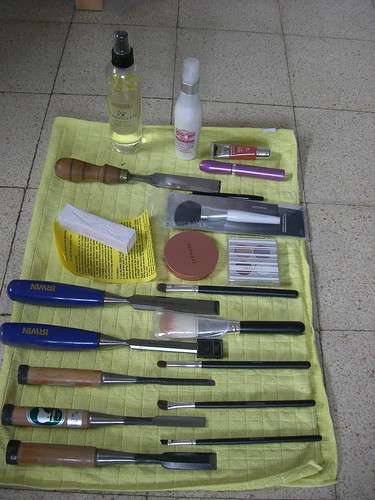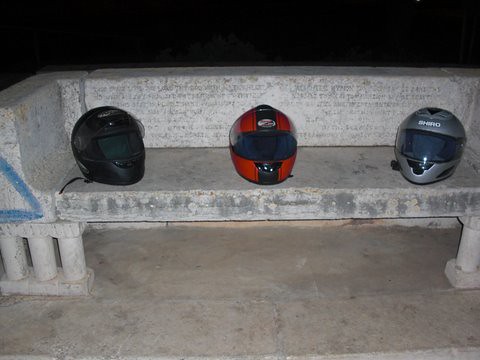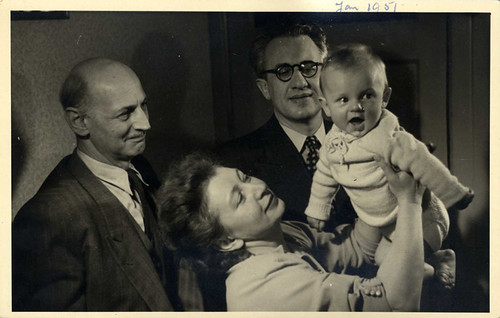Just some drivel from a PhD student in 17th century English literature. Masoret is Hebrew for tradition; Masor is also the Hebrew word for saw. Since i hope to be learning and blogging about traditional woodworking (amongst sundry other things), i thought it was an apt play on words. Before you ask, yes, i have a glamorous social life.
Sunday 26 December 2010
James I, Sport, and Unity
Tuesday 30 November 2010
Westerkerk Rimonim (Finials)
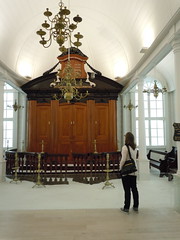 The Israel Museum just underwent a $100 million renovation. One of the highlights of the visit i took with my mum was the Tzedek VeShalom Synagogue, built in 1734 in Paramaribo, Suriname. For the woodworkers out there, the ark is made of Cyprus wood and mahogany. Below is a video about the synagogue and some really cool footage of the restoration. Just some brief history of the settlement of Jews in the area. According to our tour guide, in 1630, about 500 Jews came to Suriname to establish sugar plantations. They named them after cities in the land of Israel: Hebron, Tiberias, Jerusalem, Beersheba, to name a few of the plantations that existed in Suriname. The name of the Jewish settlement was actually the Jodensavanne, or the Jewish Savannah. To read more about the Jewish community in Suriname, click here.
The Israel Museum just underwent a $100 million renovation. One of the highlights of the visit i took with my mum was the Tzedek VeShalom Synagogue, built in 1734 in Paramaribo, Suriname. For the woodworkers out there, the ark is made of Cyprus wood and mahogany. Below is a video about the synagogue and some really cool footage of the restoration. Just some brief history of the settlement of Jews in the area. According to our tour guide, in 1630, about 500 Jews came to Suriname to establish sugar plantations. They named them after cities in the land of Israel: Hebron, Tiberias, Jerusalem, Beersheba, to name a few of the plantations that existed in Suriname. The name of the Jewish settlement was actually the Jodensavanne, or the Jewish Savannah. To read more about the Jewish community in Suriname, click here.
 In addition to paying homage to their biblical roots, the Jews of Suriname paid tribute to their Spanish-Portugese Dutch roots. Whilst having a peek around the synagogue, we noticed that one of the finials for the Torah scrolls was an unmistakable nod to the Westerkerk in Amsterdam. You know--the one that Anne Frank mentions? Pretty cool, eh? How many synagogues today would commission, let alone tolerate, a Torah adornment in the style of a church? Pretty remarkable...
In addition to paying homage to their biblical roots, the Jews of Suriname paid tribute to their Spanish-Portugese Dutch roots. Whilst having a peek around the synagogue, we noticed that one of the finials for the Torah scrolls was an unmistakable nod to the Westerkerk in Amsterdam. You know--the one that Anne Frank mentions? Pretty cool, eh? How many synagogues today would commission, let alone tolerate, a Torah adornment in the style of a church? Pretty remarkable...Thursday 29 July 2010
Grey Water Fail
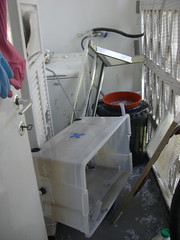 pump to get the water from the holding tank (bin--let's be honest) to the outfeed tank (that giant plastic box on a shelf), sometimes, the water overflows a bit. I usually catch it and it's ok. Today that happened. I caught it, and thankfully left the area, only to hear about 60 litres of water come crashing down with the shelf that was holding it. My floor was flooded, and only as i stood ankle deep trying to open the drain holes to release the water did i become aware that the pump's extension cord and power bar were partially submerged. Everything is (mostly) under control now. So it's back to the drawing board.
pump to get the water from the holding tank (bin--let's be honest) to the outfeed tank (that giant plastic box on a shelf), sometimes, the water overflows a bit. I usually catch it and it's ok. Today that happened. I caught it, and thankfully left the area, only to hear about 60 litres of water come crashing down with the shelf that was holding it. My floor was flooded, and only as i stood ankle deep trying to open the drain holes to release the water did i become aware that the pump's extension cord and power bar were partially submerged. Everything is (mostly) under control now. So it's back to the drawing board.Thursday 22 July 2010
Coopers Versus Joyners
Sunday 11 July 2010
Revius and Donne: Poets of the Bible
 In the past, we have noted the parallel developments in biblical scholarship and politics in the Netherlands and England (link), specifically the Authorised Version and the Statenvertaling. We have also noted the influence of Hugo De Groot (Grotius) on John Milton. Recently, i came across a poem by Jakob Reefsen (Jacobus Revius), a Hebrew scholar who worked on the Statenvertaling and who also composed religious as well as secular poetry. It reminded me of a poem by Donne, and, when taken together, there are some similarities, but overall, Revius' seems like a lesson in how not to write poetry. But i'll let you decide for yourself:
In the past, we have noted the parallel developments in biblical scholarship and politics in the Netherlands and England (link), specifically the Authorised Version and the Statenvertaling. We have also noted the influence of Hugo De Groot (Grotius) on John Milton. Recently, i came across a poem by Jakob Reefsen (Jacobus Revius), a Hebrew scholar who worked on the Statenvertaling and who also composed religious as well as secular poetry. It reminded me of a poem by Donne, and, when taken together, there are some similarities, but overall, Revius' seems like a lesson in how not to write poetry. But i'll let you decide for yourself:
'Hy Droegh Onse Smerten' (1630 in Over-Ysselsche Sangen en Dichten)
T'en sijn de Joden niet, Heer Jesu, die u cruysten,
Noch die verradelijck u togen voort gericht,
Noch die versmadelijck u spogen int gesicht,
Noch die u knevelden, en stieten u vol puysten,T'en sijn de crijghs-luy niet die met haer felle vuysten
Den rietstock hebben of den hamer opgelicht,
Of het vervloecte hout op Golgotha gesticht,
Of over uwen rock tsaem dobbelden en tuyschten:Ick bent, ô Heer, ick bent die u dit hebt gedaen,
Ick ben den swaren boom die u had overlaen,
Ick ben de taeye streng daermee ghy ginct gebonden,De nagel, en de speer, de geessel die u sloech,
De bloet-bedropen croon die uwen schedel droech:
Want dit is al geschiet, eylaes! om mijne sonden.
In English ( i grabbed the translation here):
He carried our sorrows. It is not the Jews
alone, Lord Jesus, that had you crucified;
betraying you, dragging you to the court,
hating your guts, spitting in your face,
binding you, tattooing you with bruises.
Nor only the soldiers
who with their ready fists
raised the reed, lifted the hammer high,
fixed the cursed wood at the place of the skull
and squabbled, dicing for your coat.
It's me, my God, me who did this to you.
I am the heavy tree that bore you down,
the cord that cut you mercilessly. Me.
The nail and spear. The whip they slashed you with.
The crown of blood you wore upon your brow.
Oh, all this happened on account of my own sin.
And here is of course Donne's Holy Sonnet XI (written 1609-1611?):
Spit in my face, you Jews, and pierce my side,
Buffet, and scoff, scourge, and crucify me,
For I have sinn'd, and sinne', and only He,
Who could do no iniquity, hath died.
But by my death can not be satisfied
My sins, which pass the Jews' impiety.
They kill'd once an inglorious man, but I
Crucify him daily, being now glorified.
O let me then His strange love still admire ;
Kings pardon, but He bore our punishment ;
And Jacob came clothed in vile harsh attire,
But to supplant, and with gainful intent ;
God clothed Himself in vile man's flesh, that so
He might be weak enough to suffer woe.
Monday 5 July 2010
Yes Minister on the Church of England
Monday 28 June 2010
The Character of Holland...According to the English
 In a previous post, we have referred to English hatred of the Dutch, and it's no secret that during the Anglo-Dutch Wars, the English launched some pretty nasty anti-Dutch propaganda that would have made Goebbels proud. Below is a poem by Andrew Marvell (1621-1678), a friend of Milton's in the service of Cromwell. It's pretty rude, but some of it is quite funny! Lest any Dutchies get offended, Marvell also used anti-Semitic stereotypes to berate his opponent, Samuel Parker:
In a previous post, we have referred to English hatred of the Dutch, and it's no secret that during the Anglo-Dutch Wars, the English launched some pretty nasty anti-Dutch propaganda that would have made Goebbels proud. Below is a poem by Andrew Marvell (1621-1678), a friend of Milton's in the service of Cromwell. It's pretty rude, but some of it is quite funny! Lest any Dutchies get offended, Marvell also used anti-Semitic stereotypes to berate his opponent, Samuel Parker:who but such an Hebrew Jew as you, would, after an honest man hade made so full and voluntary Restitution, not yet have been satisfied without so many pounds of his flesh over into the bargain.This is actually in the context of a debate rooted in Hebraism, so the insults get way more interesting than that (check out Rosenblatt's book on Selden, chapter 5).
Unsurprisingly, in the early modern period, religion was a source of conflict. The English disapproved of the Dutch pluralistic society, which was rooted in Republican sensibilities; this disregard for order and hierarchy was dangerous. The Dutch took the reformist call for personal autonomy in interpreting Scripture too far:
They are generally so bred up to the Bible that almost every Cobbler is a Dutch doctor of divinity...yet fall those inward illuminations so different that sometimes seven religions are found in one family.' (Schama)And finally, here is the poem. Incidentally, if you're Dutch and Jewish, well, Marvell will offend you in one form or another! ;-)
Monday 14 June 2010
Parashat Korach and Early Modern Polemics
And of course, in his unfortunately-timed 'Brief Notes Upon a Late Sermon' we have an example of a Puritan responding to the charge of being like Korach with a seventeenth-century scholarly version of 'I know you are but what am I?'
Milton also identified Satan's rebellion against God with Korah in Paradise Lost.
The examples are endless--i haven't even thrown in Hobbes!--and would make for an interesting survey, some day....
Friday 11 June 2010
Eliav Digs Dutch Designers
 One day, whilst pretending to work with my friend and esteemed colleague Hoffy (she's the one i tricked into taking me to get the lumber for my Roubo), i stumbled upon this guy Juan's blog post in which he describes his 1/2 scale build of Rietveld's classic Red and Blue Chair for his son Hugo. That was it. Hoffy and i knew we had to make one for either the kid on the way (Oria, a beautiful baby girl, now two months old), or her son Eliav (he's two and gorgeous). It seemed logical that Eliav should be compensated for the traumatic experience awaiting him, (and it will be a while before Oria can sit!) so the chair was scaled to 2/3 size. Despite its appearance, the chair is rumoured to be quite comfortable, but because it tilts back, i did not expect Eliav to want to sit in it for longer than it took to take a photo to appease his mother and myself. But apparently, if Hoffy is to be believed, he loves his little chair! As they might say in their family, der Apfel fellt nicht gerne weit vom Baume.
One day, whilst pretending to work with my friend and esteemed colleague Hoffy (she's the one i tricked into taking me to get the lumber for my Roubo), i stumbled upon this guy Juan's blog post in which he describes his 1/2 scale build of Rietveld's classic Red and Blue Chair for his son Hugo. That was it. Hoffy and i knew we had to make one for either the kid on the way (Oria, a beautiful baby girl, now two months old), or her son Eliav (he's two and gorgeous). It seemed logical that Eliav should be compensated for the traumatic experience awaiting him, (and it will be a while before Oria can sit!) so the chair was scaled to 2/3 size. Despite its appearance, the chair is rumoured to be quite comfortable, but because it tilts back, i did not expect Eliav to want to sit in it for longer than it took to take a photo to appease his mother and myself. But apparently, if Hoffy is to be believed, he loves his little chair! As they might say in their family, der Apfel fellt nicht gerne weit vom Baume.Below is a CGI animation of the chair:
Gerrit Rietveld chair from Max Philip on Vimeo.
For Anthony C. Romeo's interesting article on Rietveld's chair and the unification of motion and rest, click here. It's a great, short read. Andries van Onck's site has a very in-depth analysis of Rietveld's chair, including some fascinating sections about the various kabbalistic sephirot; it will blow your mind.
On a personal level, i definitely learnt a lot more about the ideas of De Stijl from building the piece. When all the components were laid out on the floor, it seemed hard to believe that they would eventually constitute a chair (though i must confess, i did have some doubts!). It seemed so...abstract! I wasn't so struck by the design until i started making the piece. Then, and i apologise for the vagueness, i just seemed to fall into the piece; it had some hypnotic effect; the more i looked at it and interacted with it, the more entranced i was. I know that sounds totally fruity, but it's true. I also came away with an appreciation for just how strong the joints are. There--that was a more rational, concrete comment. It was like creating a 3D Mondrian painting. The symmetry of the piece always amazed me; the way the overhang on every intersecting point was the same, and how the piece seemed so mathematically...uniform (I'm easily impressed in maths, since i have little to no understanding of it). Some concepts cannot be conveyed with words, and there is an understanding that you cannot come by through books. Indeed, Rietveld himself regarded his furniture design as experimentation with ideas, as studies. David Pye wrote about this, and for a frequent blog on this topic, Doug Stowe's blog (Wisdom of the Hands) is a must-read. Those interested in the technical execution of the piece can view the building process on this little slideshow:
Friday 4 June 2010
De Stijl (1917-1931) 'Truth is the Overall Unity of Opposites'
 De Stijl has been capturing my imagination for quite some time now. But it wasn't until fairly recently that i have been able to contextualise it. After the first world war, there were two main avant-garde Dutch movements in architecture and decorative arts. There was The Amsterdam School and De Stijl, also known as Neo-Plasticism. Both were related to Art Nouveau, the Arts and Crafts, and German Expressionism. They were into a unified style, and definitely subscribed to Morris's idea that art could change society. But that is about where these two movements go their own ways. As Alan Colquhoun explains it,
De Stijl has been capturing my imagination for quite some time now. But it wasn't until fairly recently that i have been able to contextualise it. After the first world war, there were two main avant-garde Dutch movements in architecture and decorative arts. There was The Amsterdam School and De Stijl, also known as Neo-Plasticism. Both were related to Art Nouveau, the Arts and Crafts, and German Expressionism. They were into a unified style, and definitely subscribed to Morris's idea that art could change society. But that is about where these two movements go their own ways. As Alan Colquhoun explains it,Each inherited a different strand of the earlier movements--the vitalistic, individualistic strand in the case of the Amsterdam School and the rationalist, impersonal strand in the case of De Stijl. Each movement condemned the other, ignoring their shared aims and origins. (Modern Architecture, Oxford History of Art)
 Jammer. Hopefully we'll come back to the A'dam School, but just some short background on them: Michel de Klerk (1884-1923) would be the main name to associate with the movement. They were into taking traditional architecture and tweaking it into fantastical, weird design, and they held dear the craftsman relationship to materials. Personally, of the two, the A'dam school's ethos is more to my liking, but i think De Stijl has loads to offer. So let's get back to them!
Jammer. Hopefully we'll come back to the A'dam School, but just some short background on them: Michel de Klerk (1884-1923) would be the main name to associate with the movement. They were into taking traditional architecture and tweaking it into fantastical, weird design, and they held dear the craftsman relationship to materials. Personally, of the two, the A'dam school's ethos is more to my liking, but i think De Stijl has loads to offer. So let's get back to them!Theo van Doesburg (1883-1931)
Piet Mondrian (1872-1944)--some of my friends had no idea he was Dutch based on his surname. It was originally Mondriaan, but he omitted the second 'a' to make himself sound less Dutch. Mission accomplished, i guess.
Gerrit Rietveld (1888-1964)
In 1924, Van Doesburg published the manifesto of De Stijl in the eponymously named magazine he founded with Mondrian and other artists of the movement in 1917. You can read it here. De Stijl rejected craftsmanship, favouring geometrical anti-naturalism, and, according to some, was a misinterpretation and an extreme form of the abstraction of Cubism. But what was up with all the abstraction? Could they just not paint or draw? What were they getting at? Basically, according to Carsten-Peter Warncke, Mondrian, Vantongerloo, van Doesburg, and Huszar were all trying to get back to the basic principles of art; colours, shapes, planes, and lines. They wished to create a metaphorical language, and create an ideal world counter to reality, transcending language barriers. You can see Neo-Platonism's influence on Mondrian's obsession with the purity of art and spirit, and its aim for the absolute. Style was a manifestation of a particular age's attempt to express the absolute. Therefore, Mondrian felt that the best possible style was one in which 'the individual was most strongly subjected to the universal.'
Indeed the contradiction inherent in the movement is summed up by Mondrian himself:
The universal in style must be expressed by the individual, i.e. the way in which style is formed
It remains remarkable that Mondrian should have succeeded in combining the disparate parts of the painting in such a harmonious structure. Again, he could only have achieved this through the multifaceted ambiguity that pervades the various elements of the painting. [...] a perfect harmony of opposites [...] Nothing is fixed in this system , except for the basic elements and the aim of balancing the different forces. This presupposes that all our seemingly secure assumptions should be questioned again and again. (Warncke, p.20)And, in explaining the differences between Mondrian and van Doesburg, we are surely reminded of different poetic schools of thought:
Mondrian's construction of squares and lines is a process that leads to harmony and rest to the extent that we forget everything that might be reminiscent of processes, while van Doesburg's pictures show a completely different approach to dynamics, with colour squares that border on each other harshly and are right next to each other. This dynamic has the rank of an elementary force which can only be tamed with great difficulty and changed in such a way that the well-balanced painting oscillates in its visual impact, paradoxically demonstrating harmony as vibrating restfulness. (Warncke, p.26)Milton and Donne, anyone?
Jakob van Domselaer was the only musician associated with the movement. Here you can listen to his Proeven van Stijlkunst, inspired by Mondrian's paintings
Dada to Pop--cool essay
Artlex Entry on De Stijl
To read De Stijl magazine, click here
Interesting article (or MA thesis) by Runette Kruger about the integrative tendency of the movement, unparalleled in Modern art, in which the artists of De Stijl equally evoked the technological as well as the transcendent as indicators of humanity's spiritual and cultural progress
James Presley-- Mondrian van Doesburg
Tuesday 1 June 2010
In the Library
 I always thought it would be cool to open a bar called 'The Library'. It would improve the quality of many people's lives. Frequent imbibers could pass themselves off as the studious types, and nerds could appear slightly cool and social when in fact they were headed to...the library. But this is actually real. Here is how the website describes its fragrance:
I always thought it would be cool to open a bar called 'The Library'. It would improve the quality of many people's lives. Frequent imbibers could pass themselves off as the studious types, and nerds could appear slightly cool and social when in fact they were headed to...the library. But this is actually real. Here is how the website describes its fragrance:The Scent
In the Library is a warm blend of English Novel*, Russian & Moroccan Leather Bindings, Worn Cloth and a hint of Wood Polish
*The main note in this scent was copied from one of my favorite novels originally published in 1927. I happened to find a signed first edition in pristine condition many years ago in London. I was more than a little excited because there were only ever a hundred of these in the first place. It had a marvelous warm woody slightly sweet smell and I set about immediately to bottle it.
I think it's a fair assumption that Ron Burgundy was the inspiration for this fragrance. It seems preferable to his colleague Champ Kind's Sex Panther.
The Story
I have always loved books. I am told this was the case even before I could read for myself. When I was very small, I loved the bedtime story and being read to by my mother. As a child, books provided a fantastic escape from boredom and a rather dreary daily life. As I grew older, I began to read voraciously and spent as much time as possible in the school library. I borrowed books with wild abandon and I read every one.
As an adult in New York, my reading increased further and I began to cover a much wider group of topics - possibly a rather strange group but fascinating to me nonetheless. Now I can say that reading has been perhaps the most important element of my life. So much of who I am, what I've discovered and what I know began with a book. Indeed even becoming a perfumer started in the main reading room of the New York Public Library.
In my time, I've acquired an enormous number of books. When I was very young, my parents subscribed me to a book club and they came every month in the mail. I got books regularly as birthday presents and Christmas gifts. When I was about thirteen and earning a bit of money of my own, I began to buy them for myself. One of the first was a collection of James Thurber stories, which I have to this day. I have spent countless hours of my life in bookshops large and small perusing titles carefully and hunting for the interesting. I have bought books like groceries and for much the same purpose - except instead of food for the body, books are nourishment for the spirit.
Now collecting books is one of my greatest passions. Many years ago I began hunting first editions of my favorite authors. I have learned that these can be found in the oddest places and I find few things more thrilling that stumbling across an unexpected treasure. I cannot pass a second hand bookshop and rarely come away without at least one additional volume. I now have quite a collection...
Whenever I read, the start of the journey is always opening the book and breathing deeply. There are few things more wonderful than the smell of a much-loved book. Newly printed books certainly smell very different from older ones. Their ink is so crisp though the odor of their paper is so faint. Older books smell riper and often sweeter. Illustrated books have a very different odor from those with straight text and this smell often speaks of their quality. I've also noticed that books from different countries and different periods have very individual scents too. These speak not only of their origin, but of their history to this moment. I can distinguish books that were well cared for from those that were neglected. I can often tell books that lived in libraries where pipes or cigars were regularly smoked. Occasionally I run across one that I am certain belonged to an older woman fond of powdery scent. Books from California smell very different from those I buy in New York, London or Paris. I can tell books that have come from humid places - these have a musty richness in the scent of their pages.
And then of course there are the scents of different bindings: the glues, the leathers, the cloths and boards, even the paperbacks all have very unique characteristics and, to my mind, add an extra dash of personality to an otherwise mundane object. And yes, sometimes if a book has had the misfortune of being very poorly kept, I can detect a faint whiff of mildew. This doesn't bother me in the least. It means this book has survived.
To many of course, these various bookish odors mean nothing. But to an avid reader and collector like myself, these smells are as magical as the bouquet of a great wine is to a connoisseur - a sort of literary terroir. These scents mean Excitement, Adventure, Discovery, Enlightenment and Knowledge. Of course my deep love of reading is exactly what lead me in the first place to begin capturing the scent of books and of the libraries where they live. That's what this perfume is all about.
Now, whenever I have the chance, I read aloud to my nieces and nephews. I am delighted they so enjoy this and are so eager to listen. I love sharing with them some of my own childhood favorites. There have been some very interesting discussions afterward about some of these...
But before I begin to read to the children, I always take a moment to open the book and encourage them to take a whiff. I hope for them, as it has been for me, this smell will mark the beginning of a long and wondrous journey.
Friday 21 May 2010
Suck it Up or _____ it Up

Wednesday 28 April 2010
Religious Tolerance Continued
For information on Gentius which was well nigh impossible to find online, i turned to one of the definitive books on Early Modern Hebraism: Aaron L. Katchen's Christian Hebraists and Dutch Rabbis: Seventeenth Century Apologetics and the Study of Maimonides' Mishneh Torah. It's seriously one of my favourite books!
Another reader expressed curiosity about Gentius, which i found in Katchen's book. I've (rather poorly) scanned some biographical information that Katchen provides about Gentius, which can read here. Katchen also discusses the Abraham story, which is also available here.
Below is the article by Kohut, published in 1902:
Abraham's Lesson in Tolerance
Sunday 25 April 2010
Early Modern Hebraism as an Antecedent for Religious Toleration? Jeremy Taylor, John Locke, and Benjamin Franklin
But why did Taylor think that a medieval Persian poet was a 'Jewish doctor'? And what does a German Hebraist named Georg Gentze have to do with it? Stay tuned...
Sunday 18 April 2010
Friday 16 April 2010
Jeremy Taylor, שמות רבה, and Going for the Gold
Thursday 15 April 2010
Doing Da Vinci
Sunday 7 March 2010
Hunting For William Holman Hunt: Part 2--The House
Thursday 4 March 2010
Tools of the Trade (for Tali)
 Sorry to belabour the point with all these shop names, but i am trying to make clear the comparison; Home Depot would be the equivalent to buying makeup at CVS (there's no judgement there--sometimes you pick up a mascara at CVS, but not necessarily foundation; when you need the odd forstner bit or hearing protection, you get it at Home Depot, but you wouldn't go there for a hand plane).
Sorry to belabour the point with all these shop names, but i am trying to make clear the comparison; Home Depot would be the equivalent to buying makeup at CVS (there's no judgement there--sometimes you pick up a mascara at CVS, but not necessarily foundation; when you need the odd forstner bit or hearing protection, you get it at Home Depot, but you wouldn't go there for a hand plane). Tuesday 2 March 2010
Purim 2010=First blogaversary
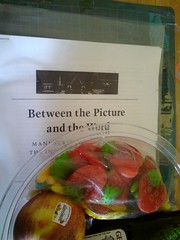 Also included (just to crank up the nerdiness and perhaps ensure my identity as the sender, since i inevitably forgot to sign these things) was an article entitled 'The Tree of Death and the Tree of Life: The Hanging of Haman in Medieval Jewish Manuscript Painting', by Katrin Kogman-Appel, courtesy of my friend Menachem Butler of the Michtavim Blog fame.
Also included (just to crank up the nerdiness and perhaps ensure my identity as the sender, since i inevitably forgot to sign these things) was an article entitled 'The Tree of Death and the Tree of Life: The Hanging of Haman in Medieval Jewish Manuscript Painting', by Katrin Kogman-Appel, courtesy of my friend Menachem Butler of the Michtavim Blog fame.Tuesday 23 February 2010
Hunting For William Holman Hunt: Part 1--The Bench
 A few months ago, my friends Becky and Prezzy, and i rode out to the monastery to check out the bench. Sadly, some toolbag vandalised the bench with spray paint, and there appear to be inscriptions on the bench, but the weather has mostly worn them away.
A few months ago, my friends Becky and Prezzy, and i rode out to the monastery to check out the bench. Sadly, some toolbag vandalised the bench with spray paint, and there appear to be inscriptions on the bench, but the weather has mostly worn them away. Sunday 24 January 2010
Columbus Woodworking Show--Part 2
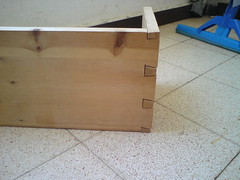
 Anyway, i think i mentioned before, we were running to get these dovetails done, so they're a bit split, but nonetheless i wanted to show off my infinitely better set of Bender-pins-first-dovetails that i made Chuck autograph (i told you i stalked him!) with the wenge pen that my mother turned. And Uri caught some of the magic on film, including his commentary.
Anyway, i think i mentioned before, we were running to get these dovetails done, so they're a bit split, but nonetheless i wanted to show off my infinitely better set of Bender-pins-first-dovetails that i made Chuck autograph (i told you i stalked him!) with the wenge pen that my mother turned. And Uri caught some of the magic on film, including his commentary.Friday 22 January 2010
Columbus Woodworking Show--Part 1
 This past Sunday, my brother, mother, and i drove from Cleveland to Columbus for the Woodworking Show. I thought they were kidding when they said they would come (can you tell i'm used to being mocked for my middle-aged-man hobby?), but they happily accompanied me. Well, maybe not happily. I printed up a 'bring your spouse for free coupon' and made my brother Uri go as my husband. He was most unhappy with this, but he played along. I think they printed 'spouse' because it would have been a bit much to print 'bring your family member who would really rather not attend a woodworking show but is going to put a cap on your spending' or something to that effect. The woman taking tickets gave us a knowing wink as Uri squirmed and gave me a resentful look. And then...we were in! It was magnificent. And a bit overwhelming. It was in a sense too big. But once you narrow it down to stuff you want to see, it becomes more manageable. Not only did i get to see Lie Nielsen tools in person, but as my friend Dave Richards suggested, i got to use them (i thought he was teasing me)! It was phenomenal.
This past Sunday, my brother, mother, and i drove from Cleveland to Columbus for the Woodworking Show. I thought they were kidding when they said they would come (can you tell i'm used to being mocked for my middle-aged-man hobby?), but they happily accompanied me. Well, maybe not happily. I printed up a 'bring your spouse for free coupon' and made my brother Uri go as my husband. He was most unhappy with this, but he played along. I think they printed 'spouse' because it would have been a bit much to print 'bring your family member who would really rather not attend a woodworking show but is going to put a cap on your spending' or something to that effect. The woman taking tickets gave us a knowing wink as Uri squirmed and gave me a resentful look. And then...we were in! It was magnificent. And a bit overwhelming. It was in a sense too big. But once you narrow it down to stuff you want to see, it becomes more manageable. Not only did i get to see Lie Nielsen tools in person, but as my friend Dave Richards suggested, i got to use them (i thought he was teasing me)! It was phenomenal.
